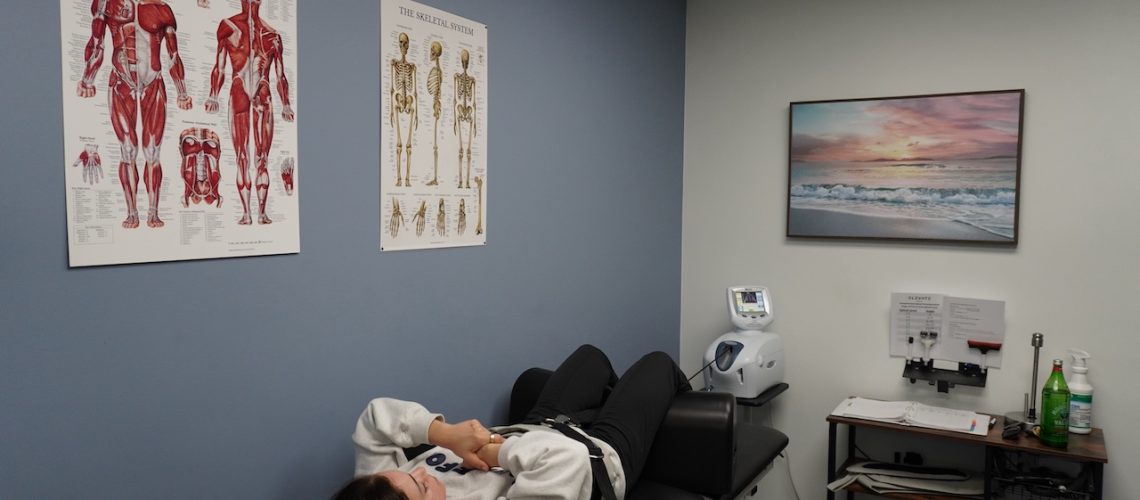Sciatica and herniated discs can cause debilitating pain, limiting mobility and affecting overall quality of life. While traditional treatments such as pain medication and physical therapy may provide temporary relief, spinal decompression therapy offers a non-surgical, long-term solution for managing and alleviating these conditions.
In this article, we’ll explore how spinal decompression therapy works, who can benefit from it, and why it may be the key to lasting relief from sciatic nerve pain and herniated discs.
Understanding Sciatica and Herniated Discs
Sciatica is a condition that occurs when the sciatic nerve—the longest nerve in the body—becomes compressed or irritated. This often leads to pain that radiates from the lower back down through the legs, sometimes accompanied by numbness, tingling, or weakness.
A common cause of sciatica is a herniated disc, which occurs when the soft, gel-like center of a spinal disc pushes through a tear in the outer layer, pressing on nearby nerves. Other contributing factors to sciatic nerve pain include:
- Spinal stenosis (narrowing of the spinal canal)
- Degenerative disc disease
- Bone spurs
Left untreated, these conditions can severely impact daily life, making simple movements painful and reducing mobility.
How Spinal Decompression Therapy Works
Spinal decompression therapy is a non-invasive, traction-based treatment that gently stretches the spine to relieve pressure on compressed discs and nerves. This process helps create negative pressure within the discs, allowing bulging or herniated discs to retract, which can reduce nerve irritation and inflammation.
During a spinal decompression session:
- The patient lies comfortably on a motorized decompression table.
- A harness is placed around the pelvis and lower back to apply controlled traction.
- The table gently stretches the spine, creating space between the vertebrae and reducing pressure on affected discs.
- Increased circulation to the spinal discs promotes healing by delivering oxygen and essential nutrients.
This gradual stretching and relaxation process encourages the spine to heal naturally while relieving the pressure that contributes to pain and discomfort.
Who Can Benefit from Spinal Decompression Therapy?
Spinal decompression therapy is ideal for individuals experiencing:
✔️ Chronic lower back pain
✔️ Sciatica (radiating leg pain)
✔️ Herniated or bulging discs
✔️ Degenerative disc disease
✔️ Spinal stenosis
If you’ve tried other treatments such as pain medication, steroid injections, or physical therapy without success, spinal decompression may provide the relief you’ve been seeking. To learn more about how this therapy can help, visit our Spinal Decompression Therapy page.
The Benefits of Spinal Decompression Therapy
✅ Non-Surgical Pain Relief – Avoid the risks and downtime associated with spinal surgery.
✅ Improved Mobility – As the spine heals, flexibility and movement improve.
✅ Enhanced Healing – Increased circulation to the discs promotes faster recovery.
✅ Drug-Free Treatment – Reduce reliance on pain medications and invasive procedures.
Many patients experience significant relief after a series of treatments, with some noticing improvements after just a few sessions.
What to Expect During Treatment
Each spinal decompression session lasts about 30 to 45 minutes. Most treatment plans involve multiple sessions over a few weeks, depending on the severity of the condition.
During treatment, patients typically feel a gentle stretching sensation but no pain. Many find the sessions relaxing, as the therapy encourages deep muscle relaxation and improved circulation.
For those wondering whether spinal decompression is the right choice, consulting with a specialist is the first step. If you’re ready to explore this treatment, visit our Spinal Decompression Therapy page to learn more.
Final Thoughts
Chronic sciatica and herniated disc pain can be life-altering, but spinal decompression therapy offers a promising, non-invasive solution for long-term relief. By targeting the root cause of the pain—compressed nerves and misaligned discs—this therapy helps restore function, mobility, and overall spinal health.
If you’re seeking a treatment that goes beyond temporary pain relief, consider spinal decompression therapy as part of your recovery plan. Reach out to a trusted provider and take the first step toward a pain-free life today.Would you like me to generate a meta title and meta description for this blog post as well?

